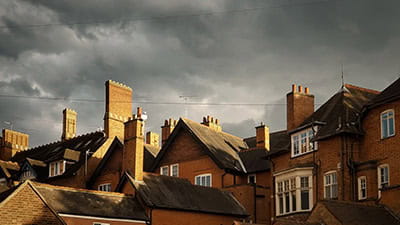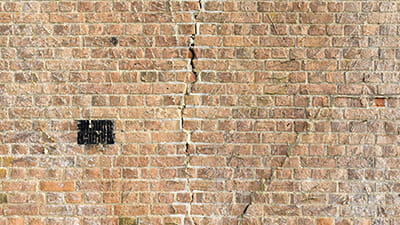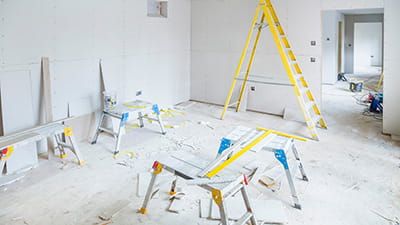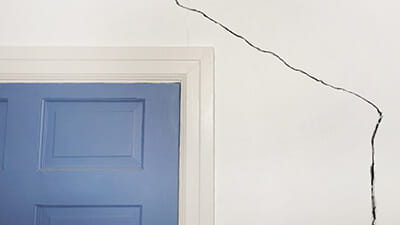

Explore the various factors that influence crack severity, including width and location. Also, learn about the main causes behind cracks in plaster walls and how to fix hairline cracks yourself. Read on to discover when to address cracks and when to seek expert advice.
There are many different types of plaster cracks you can find in your home, each varying in direction, width and length. Whether you encounter cracks on walls, door frames or ceilings, it’s essential to determine how significant they are. While some are nothing to panic about, others can be down to structural problems.
The types of plaster cracks are:
The way to fix plaster cracks depends on their width. Some can be fixed yourself, while others require a professional.
| Severity | Width of cracks | Action |
|---|---|---|
|
Negligible |
Less than 0.1mm |
No action necessary |
|
Minimal |
Up to 1mm |
Easy DIY fix (redecorating) |
|
Slight |
1mm – 5mm |
Fix with filler (exterior cracks may need repointing) |
|
Moderate |
5mm – 15mm |
Likely to require a professional |
|
Severe |
15mm – 25mm |
Requires a professional due to structural damage |
|
Very severe |
Above 25mm |
Major structural work needed (potentially unpinning and rebuilding) |
When examining cracks in your plaster walls, it’s vital to figure out if they could indicate structural issues.
One way to tell if cracks in your wall are structural is if they run diagonally. This can be a sign that there’s been some structural movement that needs addressing.
Diagonal cracks of 3mm or more could be a sign of subsidence, which is when the ground underneath your house sinks and unbalances your foundations, causing cracks in the walls. So, if you spot any cracks like these, it’s always best to contact an engineer.
If you notice a crack wider than 15mm, it could be a sign of structural damage and require immediate attention from a professional. It’s also worth getting an engineer to investigate any cracks you may have above door frames – these can be signs of foundation damage.
There are various reasons cracks can start appearing in your plaster walls. Here are some of the most common:
Repairing minor plaster cracks is a simple process that you can do yourself. You’ll need a few tools to get going – here’s a quick checklist:
Got your tools together? Move all furniture out of the way and cover any surfaces you want to protect. Then, follow these steps to fix the cracks in your plaster walls.
Remember, this advice is for hairline cracks and those below 5mm. For any cracks 5mm or above, it’s best to enlist professional help.
As previously mentioned, hairline cracks and cracks up to 5mm are typically not cause for concern, and you can address them on your own. However, if you notice cracks that are wider than 5mm or diagonal (stair-step) cracks, then the best thing to do is contact a professional.
When it comes to the structural integrity of your home, it’s always better to err on the side of caution. An engineer can assess the situation thoroughly and advise you on the best solution. It’s also important to have home insurance, which could help any costs incurred when you need to repair structural damage to your property.
Whether you're looking for straightforward insurance or cover that's packed with extras, our home insurance has plenty of options for people over 50.


Choose our highest home cover level Saga Plus and freeze the price of your home insurance for 3 years if nothing changes. T&Cs apply.
There's plenty to explore and learn about our home insurance cover.

Keeping it simple to set up and manage, combined buildings and contents insurance offers great cover with less paperwork.

Find out all you need to know about storms and home insurance – and the most important thing you need to do to prepare for one.


Planning some time away? Make sure your property is still protected if you leave it empty for a while.

Find out how to accurately estimate the value of your home’s contents to get the right level of cover.

What cover do you need when relocating? Read our guide to protecting your possessions and your properties old and new.

The energy price rise is impacting millions of UK households. So, what changes can we make to keep costs down and reduce energy use at home?

Get unlimited legal advice and protect yourself against the cost of disputes over contracts, property damage, personal injury and more.

Whether you’re fitting a new kitchen, converting the loft or extending the house, keep your home protected at all times.

Use our seasonal home maintenance checklist to keep your home ship shape and avoid major costly repairs

Do you need buildings insurance for a leasehold flat? We explain how flat insurance works.

When can you fix cracks yourself and when should you ask for help?

Protect your favourite things against theft, fire and accident with up to £100,000 content cover at a 3-year fixed price.

Enjoy your two-wheel adventures more when you get the right bike insurance.

Fix the price for the next 2 renewals with Saga Plus home insurance. You'll have no surprises when you come to renew. T&Cs apply.

What does it mean? Here’s how home insurance can help with get things back to normal after a leak.